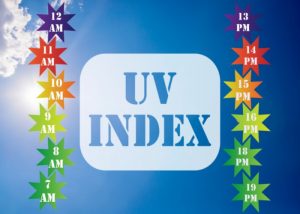Today, Monday June 27 is National Sunglasses Day. Here in Spain, it is hard to find an adult without a pair of sunglasses. However, many children continue to squint through the day.
For children and teenagers, the need to use approved sunglasses that comply with the regulations is even greater. This is because the eyes of a child are more vulnerable than an adult as the pupil remains more dilated and the pigmentation of the eye, which acts as a protective barrier, becomes darker with the passage of time.
Sunglasses protect the eyes from over exposure
Almost 50% of the ultraviolet UV radiation to which we are exposed throughout life affects ocularly before the age of 18. Therefore, it is important to bear in mind that the structures and eye tissues of children and teenagers are not fully developed. Consequently, they are more sensitive than adults to solar radiation and have fewer defense mechanisms.
In addition, their annual exposure to the sun is three times higher than that of adults, since they spend more time outdoors. High sun exposure without protection can lead to eye damage. Children may suffer symptoms of pain, photophobia, headaches, and redness of the eyes.
How can I tell if the sunglasses are approved?
All sunglasses should have the CE mark and a category between 0-4. The CE mark indicates that a product meets the relevant European standards of health and safety requirements. However, some products entering Spain through imports may have fake CE marks.
So how can we tell if the CE mark is fake?
The CE symbol, which stands for China Export is very similar to the CE mark but has slight differences. The symbol is used especially on products through imports from China.
Whereas, the standard CE mark consists of the letters C and E, which are formed by interlocking circles with the same radius, with a certain distance between them. This mark indicates that the product has been manufactured and certified in accordance with European directives. The product bearing this sign is free to circulate in the European market.
However, the CE symbol, which is an abbreviation of China Export, the letters C and E are closer to each other. The letter E is located right next to the letter C and there is no extra space in between letters.
The China Export icon is placed arbitrarily by Chinese manufacturers and does not confirm any test results.
Categories of sunglasses
There are different categories of sunglasses which depend on the conditions. They are as follows;
- Category 0 is a clear or very light tint lens. These are mainly for impact protection in a work situation.
- Category 1 is not ideal for sunny conditions. However, it is OK when overcast.
- Category 2 is OK for partially sunny conditions and gives a reasonable amount of protection against glare.
- Category 3 is for strong sunlight and is the most common category
- Category 4 is ideal in mountains or desert where the sun is intense and there are high reflective glare conditions such as white snow and mass area of sand.
Effects on the eyes
Acute effects of UVR include photokeratitis and photoconjunctivitis (inflammation of the cornea and conjunctiva, respectively). These effects are reversible, easily prevented by protective eyewear and are not usually associated with any long-term damage but are painful and might require therapeutic intervention.
Chronic effects of UVR include:
- cataract (an eye disease where the lens becomes increasingly opaque, resulting in impaired vision and eventual blindness);
- pterygium (growth of fleshy tissue which can cover part of the cornea); and
- cancer in and around the eye (basal cell carcinoma, squamous cell carcinoma and melanoma).
UV exposure may also be involved in the development of age-related macular degeneration (AMD).
Worldwide, it is estimated that 15 million people are blind due to cataracts; of these, around 10% may be due to exposure to UVR.
Children and adolescents are particularly vulnerable to the harmful effects of UVR due to their skin and eye structure. Sunburns in childhood lead to a higher risk of skin cancer in later life. Also, a larger amount of UVR can reach and damage their retina.
Therefore, the frequent use of approved sunglasses and regular application of sunscreens, is a MUST. Consequently, this will drastically reduce the possibilities and risks of suffering any long-term damage.
Let your child choose the sunglasses that they like the most and they will be more likely to wear them.
Also read: The sun and your pets
Remember, even if the day is slightly cloudy, maintain the use of sun protection and get into the habit of wearing sunglasses.
Potential problems caused by over exposure
The World Health Organisation (WHO) lists the following key facts about over exposure
- Skin cancers are caused primarily by exposure to ultraviolet radiation (UVR), either from the sun or from artificial sources such as sunbeds.
- Globally in 2020, over 1.5 million cases of skin cancers were diagnosed and over 120 000 skin cancer-associated deaths were reported.
- Worldwide, it is estimated that 15 million people are blind due to cataracts; of these, some 10% may be due to exposure to UVR.
- Excessive sun exposure in children and adolescents contributes to skin cancer in later life.
- A certain amount of UV exposure is beneficial to health, in particular for vitamin D.
- Simple and effective prevention measures are available. Sun protection is recommended when the ultraviolet index is 3 and above.
Fair-skinned people suffer more from sunburn and have a higher risk of skin cancer than dark-skinned people; however, darker-skinned people also develop skin cancers. Consideration of eye damage is important for everyone.
Helpful SunSmart Global UV App
This new app provides localised information on ultraviolet (UV) radiation levels. It has been launched by the World Health Organisation (WHO), the World Meteorological Organisation (WMO), the United Nations Environment Programme (UNEP) and the International Labour Organisation (ILO).
The app provides five-day UV and weather forecasts at searchable locations. Furthermore, it automatically highlights time slots when sun protection is required. It aims to help people know when to use sun protection, in an effort to reduce the global burden of skin cancer and UV-related eye damage.
The SunSmart Global UV app is available free of charge at both the Apple App and Google Play stores. There are personalised options so that users can take actions to protect prolonged, excessive UV exposure. The app is currently available in Chinese, English, French, German, Russian, Dutch and Spanish.
UV Index
The app is based on the UV Index, which describes the level of solar UV radiation at the earth’s surface. The UV Index is reported on a scale of 1 (Low) to 11 and higher (Extreme). Therefore, the higher the index value, the greater the potential for damage to the skin and eye. But also, the less time it takes for harm to occur.
Also read: Ten European cities with the most hours of sunshine



